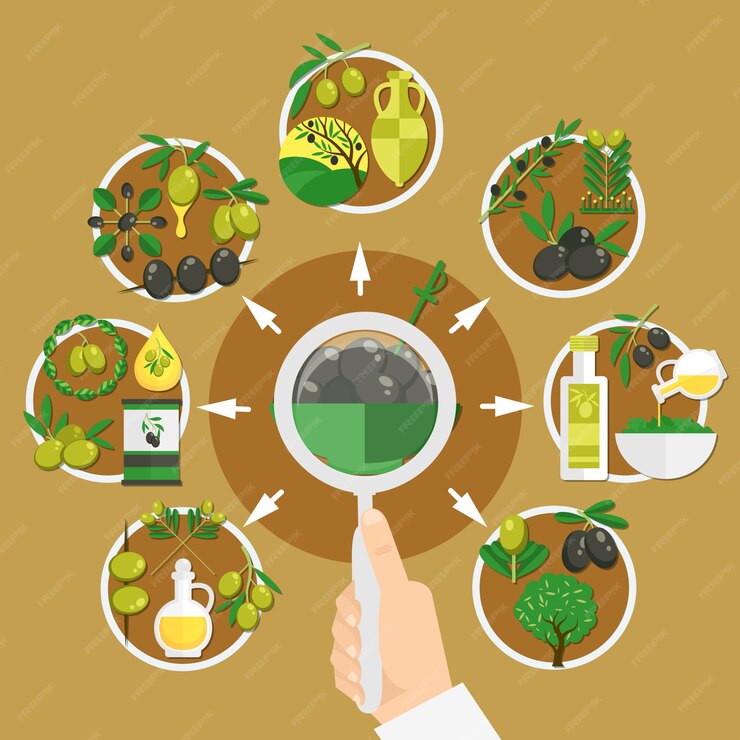Food contamination is a severe risk that can cause illness and spoilage. This blog post will provide tips on avoiding the four most common food contaminants. Follow these essential steps to keep yourself protected against potential risks associated with unsafe food handling practices!
Understand the Four Types of Food Contamination
Food contamination is a serious issue that can result in foodborne illnesses. Understanding the 4 types of food contamination is crucial in preventing these illnesses. The first type is physical contamination, where foreign objects such as broken glass or hair get into food. The second type is chemical contamination, where food comes into contact with dangerous chemicals such as pesticides or cleaning agents.
The third type is biological contamination, where food is contaminated with harmful bacteria, viruses, and parasites. The fourth type is allergenic contamination, where food contains ingredients that can trigger an allergic reaction in some people. Knowing about these types of food contamination can help you take necessary precautions to ensure your food is safe and healthy.
-
Biological Contamination
Biological contamination is a growing concern for many individuals and industries, as it severely threatens the health and safety of people and animals. From pathogens in food to bacteria in water and air, there are numerous ways in which biological contamination can occur. Taking preventative measures to reduce the risk of contamination is crucial, whether through proper hygiene practices or strict protocols in manufacturing and distribution processes. Being vigilant and taking proactive steps to safeguard against biological contamination can help ensure a healthier and safer environment.

-
Chemical Contamination
The issue of chemical contamination has become increasingly prevalent in recent years. From polluted water sources to contaminated soil, harmful environmental chemicals significantly threaten human and animal health. Exposure to these chemicals can harm our physical health, environment, and ecosystems. Unfortunately, identifying and controlling chemical contamination can be difficult, as many of these toxic substances are difficult to detect and can continue to cause harm for years. We must prioritise efforts to address this issue and work towards creating a safer, more sustainable future for all.
-
Physical Contamination
Physical contamination can be a severe issue for any industry producing goods. This type of contamination occurs when foreign objects, such as metal fragments or glass shards, find their way into products during manufacturing or packaging. The consequences of physical contamination can be severe, potentially causing injury or illness to consumers who unknowingly ingest these objects.
To prevent physical contamination, companies must have strict quality control measures, from inspecting raw materials to using metal detectors during production. By taking these precautions, companies can ensure the safety and integrity of their products, giving consumers peace of mind and protecting their brand’s reputation.
Practice Proper Hygiene Habits in the Kitchen
The kitchen is often considered the heart of the home. It’s where meals are prepared, and memories are made. But with all the cooking and cleaning that goes on, it’s important to remember the importance of proper hygiene habits in the kitchen. This means washing your hands regularly, using clean utensils and cutting boards, and properly storing food to prevent contamination.
Following these basic hygiene practices ensures that your meals are delicious and safe to eat. Plus, you’ll set an excellent example for your family and friends, creating a healthy environment for everyone to enjoy. So let’s get cooking, but let’s do it safely and cleanly!
Store Food Safely to Avoid Cross-Contamination
Proper food storage is crucial for both food preservation and safety. Avoid cross-contamination by storing raw meat, poultry, and seafood in sealed containers on the bottom shelf of your fridge. Keep ready-to-eat foods on the upper shelves.
Pay Attention to Use-By Dates on Packaged Goods
It’s easy to overlook the use-by date on packaged goods, especially when the food looks and smells fine. However, paying attention to these dates is crucial to prevent foodborne illness and ensure you consume the freshest food possible. These dates are not arbitrary; they are based on rigorous testing to inform consumers of the optimal time to finish the product.
By ignoring the use-by date, you may be putting yourself and your family at risk of illness. The next time you consider using a product past its expiration date, think twice and prioritise your health and safety first.
Learn the Signs of Food Poisoning and Seek Immediate Medical Attention if Necessary
Food poisoning can happen to anyone, and it’s crucial to know the signs to take action immediately. Symptoms like nausea, vomiting, diarrhoea, and stomach cramps are usually the first signs of food poisoning. But it can be more complicated. Sometimes, it can take hours or even days for symptoms to show.
That’s why watching out for other signs, like fatigue, fever, and dehydration, is essential. If you experience any of these symptoms after eating, seeking medical attention is critical. Don’t wait until the symptoms become severe. Pay attention to your body and be aware of any changes that may signal food poisoning. Your health is too important not to take it seriously.

Conclusion
To prevent foodborne illness, practising proper hygiene and staying informed about food safety risks is essential. Taking proactive measures at home and learning about food poisoning can help reduce the chances of getting sick. By understanding good hygiene practices, safely storing food, and learning the signs of food poisoning, we can all contribute to a healthier world.











